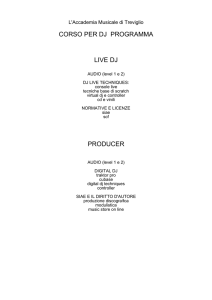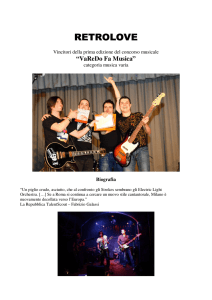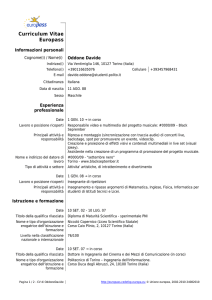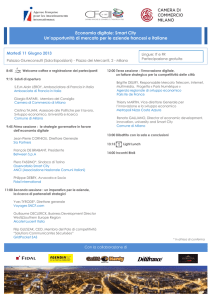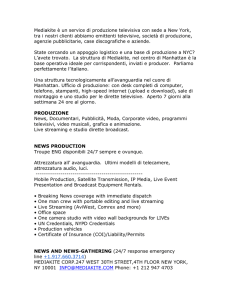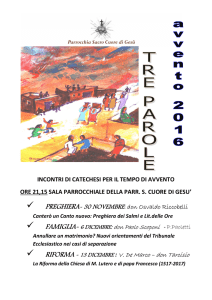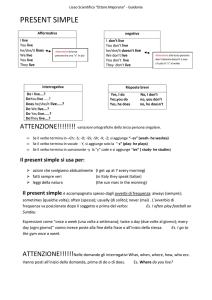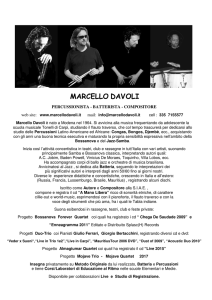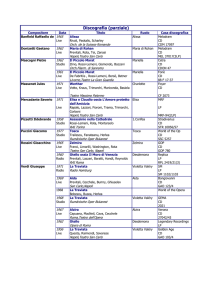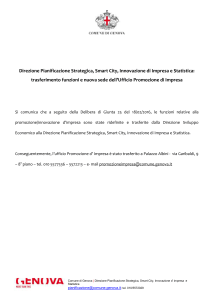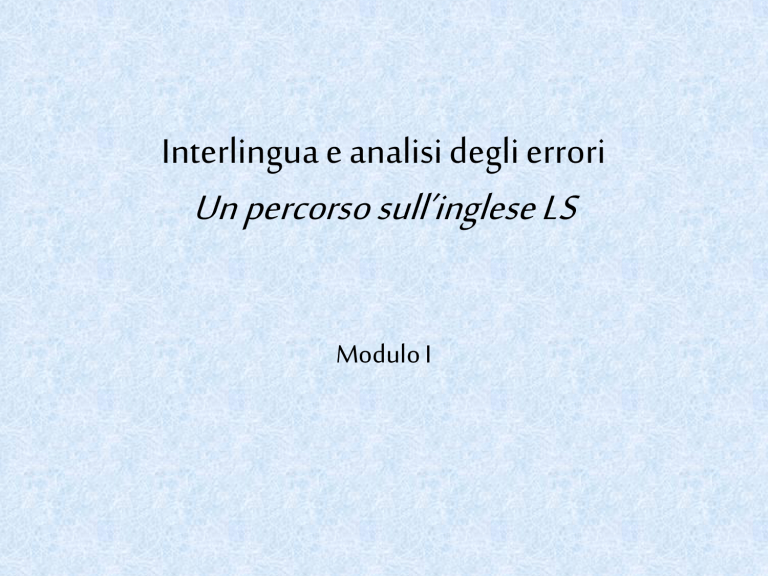
Interlingua e analisi degli errori
Un percorso sull’inglese LS
Modulo I
Alcuni atteggiamenti
<< sbagliando s’impara>>
<< errare è umano, perseverare è diabolico>>
<< i conti non tornano >>
<< correggimi se sbaglio >>
Che cos’è un errore?
…
è una deviazione dal sistema della lingua
d’arrivo
…
è una realizzazione linguistica non
adeguata alla situazione
…
è una realizzazione linguistica che
ostacola la
comunicazione
…
è un’infrazione alle regole d’uso di una lingua
…
è una deviazione dalla norma linguistica
dell’insegnante
…
è relativo
Errori e correzione
La correzione è inutile perchè:
• provoca frustrazione
nell’apprendente
• costringe ad un maggior controllo
formale a scapito della spontaneità
La correzione è necessaria perché:
• l’errore è un’abitudine negativa da
correggere
• costituisce un feedback importante
• è richiesta dallo studente
Caratteristiche
individuali
Lingua
madre
Altra lingua
straniera
conosciuta
Luogo in cui si
studia
Elementi caratterizzanti
l’apprendimento
di una seconda lingua
Cultura
d’origine
Metodo di
insegnamento
Lingua da
apprendere
Strategie di comunicazione
e d’apprendimento
Si può visualizzare il concetto di acquisizione di una lingua utilizzando
l’immagine di un labirinto.
All’inizio del suo percorso l’apprendente non sa dove andrà a finire, prende
quindi strade che gli sembrano promettenti, elabora e sperimenta ipotesi,
anche se spesso è costretto a tornare sui suoi passi, fino a quando non
intravede la via giusta.
Interlingua
Sistema linguistico elaborato
dall’apprendente che risulta dai
tentativi di produrre una norma della
lingua di arrivo
La nozione di interlingua tiene conto del fatto che le produzioni degli apprendenti
non devono essere viste come insieme di parole e frasi costellate di errori, ma un
sistema governato da regole ben precise.
Gli errori e le ricerche sull’interlingua
Gli errori dal punto di vista della ricerca
sull’interlingua sono manifestazioni di un sistema
linguistico transitorio, con una sua logica interna, una
sua coerenza e soprattutto una sua funzionalità.
Se la natura e la quantità degli errori commessi da uno
studente non forniscono una misura diretta della sua
conoscenza della lingua, rappresentano probabilmente la
più importante fonte di informazione sulla natura della
sua conoscenza
(Corder, 1983, p.288)
Attività 1 - Dati
Testo A - Composition
Once upon a time there was a man who called Taro Urashia in small villane in Japan. One day, when
he take a walk near his home, he help one turtle on the seaside. Since he helped the turtle, he was able
to get a chance to be invited from sea castle which is deep place in the sea.
He had been entertained with music, good board, dance, etc. every nights by beautiful girls of sea
castle.
Therefore, he got worldly presence and he did not notice how long did he stay there.
Nevertheless he missed the new world, so he said he wanted to go back to true world.
Attivita 1 - Dati
Testo B - Composition
I will tell you why I want to live in country better than in city. I live in suburb where is near Tokyo, and many people just return to my city
for sleep. I know both city and country. Both they have good points and bad points, but I prefer to live in country.
I like nature, so I choose country. There are many inconvenient things, if you live in country. However I prefer nature better than
convenience. I do not like narrow spaces, because I think it’s not good for children, also our mind. Furthermore, I like quiet place.
If I live in country, I don’t have opportunity to enjoy entertainment. Also education system is not so good as city. That’s a problem. It is
diffucult to say exactly I want to live in country. If there is a possibility to live in suburbs. I prefer it, because we have both side.
I can say I don’t want to live in city. My idea for city is enjoyable place, but not to live. If I live in city, I will have frustration. Also I guess,
relationship in city is those difficult than in country.
If I had only two choice, I prefer country. I’ve never thought to live in city. Actually city is fun, but I do not want to live in city. I want to keep
my mind peacefully.
Classificare gli errori
Criterio di:
• correttezza
• appropriatezza
• comprensibilità
Descrivere gli errori in base a:
effetti comunicativi
categoria linguistica
Effetti comunicativi
• errori che ostacolano la comunicazione
• errori che non ostacolano la comunicazione
Categoria linguistica
• errori di pronuncia/ortografia
• errori morfologici
• errori sintattici
• errori lessicali
• errori stilistici
Gli errori costituiscono una fonte di informazione
importante per il docente, in quanto indice di come procede
lo sviluppo dell’interlingua dei nostri studenti.
Descrivere e analizzare gli errori in maniera corretta significa
essere anche in grado di pianificare interventi didattici più
efficaci.
La negazione
Time 1
Time 2
Time 3
I am no go
I am no go
I am no go
No look
No look
Don’t look
I am no run
I am don’t run
I am don’t run
No run
Don’t run
Don’t run
Sequenza d’apprendimento della negazione
Stage
Descrizione
Esempio
1
Negazione esterna alla frase ( “no” No you are playing
o “Not” vengono preposte a tutto
here
l’enunciato da negare)
2
Negazione interna (“no”, “not” o
“don’t” si trovano tra soggetto e
verbo principale)
Mariana not coming
today
3
La negazione dei verbi modali e
del verbo essere
I can’t play that one
4
La negazione degli ausiliari (do
analizzato)
She didn’t believe me
Ellis (1994)
La formazione delle domande
Stage
Descrizione
Esempio
1
Intonazione ascendente
He work today?
2
Univerted WH (+/- ausiliare)
What he saying?
3
Overinversion
Do you know where is
it?
4
Differentiation
Does she like where
she lives?
L’ordine dei morfemi
Stage
Descrizione
Esempio
1
-ing; -s plurale; copula
Books
John going
John id here
2
Ausiliare be; articoli the/a
John is going
The books
3
Passato irregolare
John went
4
Passato regolare (-d); -s di 3^
persona singolare; -’s possessivo
I played footballJohn
likes book
John’s book
Krashen (1977)
Analisi dell’interlingua
*INV:
uhuh okay and then what happens then?
*232: uh ... the boys it and dogs ... it uh
... sleeping ... on the ... bed .
*232: and the frog is coming +...
*INV: the frog is +...
*232: escapa@l1 ? .
*INV: ah escape [“] ?
*232: escape@e .
*INV: ah very good escapa@l1 he escaped ...
okay good ... and then?
*232: And then ... boys and dogs ...it ...
no ... no +...
*INV: what does the boy do?
*232: look ... in ... the ... kettle.
*232: no ... no ... look frog .
Analisi dell’interlingua
Esempio 2 – Frog story
*435: ok there was this boy and this uhm the dog .
*435: and they put [//] they catch the frog in it .
*435: and they put it in a jar .
*435: now in the night when [/] while they were sleeping
[c] +...
*435: +, the frog came out of the pot ... of the jar .
*435: next morning the boy and the dog uh went to see
the frog .
*435: but it was not there anymore .
*435: so they searched every where in the house .
*435: and the dog went searching in the jar .
*435: and he had his head was stuck in the jar .
%com: self-correction from “had his head stuck” to “his
head was stuck”?
*435: then they went out of the window +...

